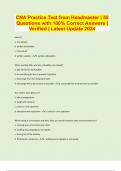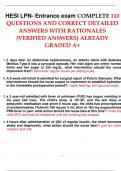Summary
Summary A Comprehensive Course in Analysis Part 2B Barry Simon
- Course
- Advanced Complex Analysis
- Institution
- Alabama State University
Reed–Simon2 starts with “Mathematics has its roots in numerology, geometry, and physics.” This puts into context the division of mathematics into algebra, geometry/topology, and analysis. There are, of course, other areas of mathematics, and a division between parts of mathematics can be a...
[Show more]












